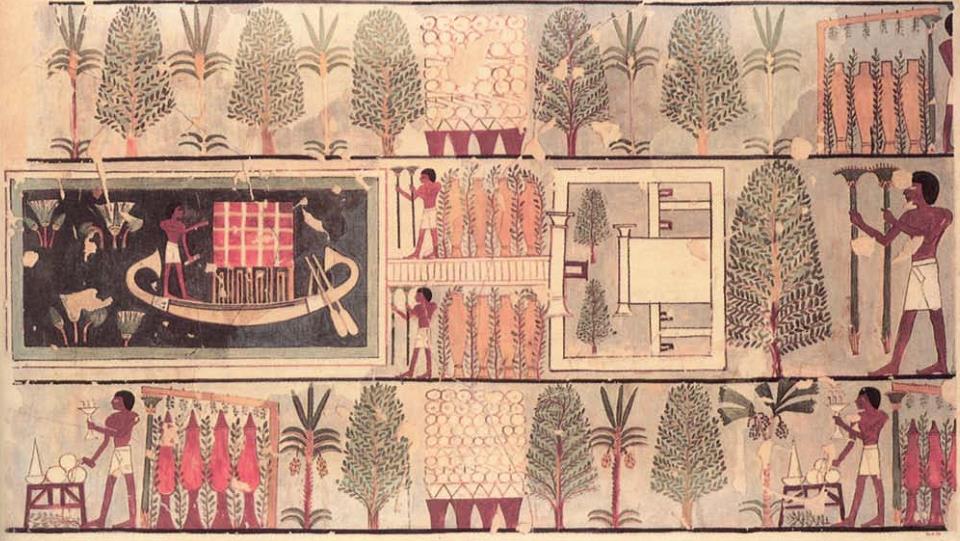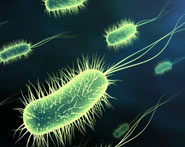


 النبات
النبات
 الحيوان
الحيوان
 الأحياء المجهرية
الأحياء المجهرية
 علم الأمراض
علم الأمراض
 التقانة الإحيائية
التقانة الإحيائية
 التقنية الحيوية المكروبية
التقنية الحيوية المكروبية
 التقنية الحياتية النانوية
التقنية الحياتية النانوية
 علم الأجنة
علم الأجنة
 الأحياء الجزيئي
الأحياء الجزيئي
 علم وظائف الأعضاء
علم وظائف الأعضاء
 الغدد
الغدد
 المضادات الحيوية
المضادات الحيوية|
Read More
Date: 8-11-2016
Date: 2-11-2016
Date: 30-10-2016
|
Inroduction to Classification and Systematics
Nomenclature is the science of giving things names. One of the critical goals of biological nomenclature is to provide each species with a unique name, thereby permitting easy and effective communication about organisms. The confusion and misunderstandings that would arise if several organisms shared the same name must be avoided. We humans and our prehuman ancestors have always been concerned with plant identification: Herbivores must recognize which plants are suitable for food and which are poisonous. Medicinal plants had to be named and categorized as well. As civilization developed in Asia, the Middle East, and the Americas, each society devised its own system of nomenclature, many of which were quite elaborate and grew to encompass thousands of cultivated or gathered plants (Fig. 1).

FIGURE 1:This wall painting shows an Egyptian garden about 1400 B.C., but extensive collecting, cultivation, and classification occurred long before this. Grave inscriptions from 3000 B.C. show that this basic gadan pattern had been developed 5000 years ago. Ancient records list cultivated and collected plants, some used for food or medicine, others for beauty and fragrances. Shown here are date balms, sycamore figs, and papyrus stalks.
With the discovery of evolution by natural selection, the basis of naming plants suddenly changed: Natural selection showed that all organisms are related to each other genetically, some closely, others distantly. Taxonomists, scientists who specialize in classification and naming, immediately realized that the most scientifically valid system of as-signing names to species would be one that reflected evolutionary relationships. At the end of the last century, taxonomists adopted the goals of (1) developing a natural system of classification, a system in which closely related organisms are classified together, and (2) assigning plant names on the basis of evolutionary relationships. The nomenclature would reflect the natural system of classification. Because organisms range from closely to distantly related, taxonomists devised a classification and a nomenclature with numerous levels. In this system, closely related species are placed into a genus, closely related genera are grouped together into a family, and so on.
The development of a natural system of classification had profound, far-reaching effete on taxonomy. Prior to this, the task of taxonomists was to discover and identify new species and give them unique names. Now, with a natural system of classification, any new species that is identified must be studied to determine which other species it is related to, so that the correct genus and family names can be given to it. In many cases this is relatively simple. Explorations of Mexico frequently result in the discovery of new species of composites, members of the sunflower family. These often have distinctive features shared by other composites in the region, so it is not difficult to determine the genus to which a new species belongs. Other cases can be much more difficult because the new species has features common to several genera, or it has some features that seem to indicate that it definitely belongs in one genus but other features that seem to definitely indicate that it should not be a member of that genus. In such cases, taxonomists must consider carefully he significance of the conflicting features. Part of the classification system may be incorrect ad may not really be reflective of evolutionary relationships. The problem of inconsistent or conflicting features occurs at all levels of the classification system, and in many cases we are not certain which genera should be classified in which families or which families should be considered closely related.
Starting about 400 million years ago, a long series of mutations and natural selection gave rise to the vascular land plants. During the intervening eons since then, that evolutionary line has progressed and diversified, branching into more and more lines of evolution. Thousands of these have become extinct and are known only by fossils; thousands of other evolutionary lines are represented by the approximately 400,000 species of living vascular plants. The goal of modern taxonomy is to understand each of these evolutionary lines and to have the classification reflect their relationships accurately. Although the evolutionary diversification pattern is a reality, the classification system is a hypothesis, a model that attempts to map that evolution. Our knowledge is incomplete and imperfect, and the current classification system is only an approximation. It is probably a close approximation; we do not expect any major changes in it, but we do expect numerous smaller changes to be made periodically for many years.



|
|
|
|
كل ما تود معرفته عن أهم فيتامين لسلامة الدماغ والأعصاب
|
|
|
|
|
|
|
ماذا سيحصل للأرض إذا تغير شكل نواتها؟
|
|
|
|
|
|
|
بالتعاون مع العتبة العباسية مهرجان الشهادة الرابع عشر يشهد انعقاد مؤتمر العشائر في واسط
|
|
|